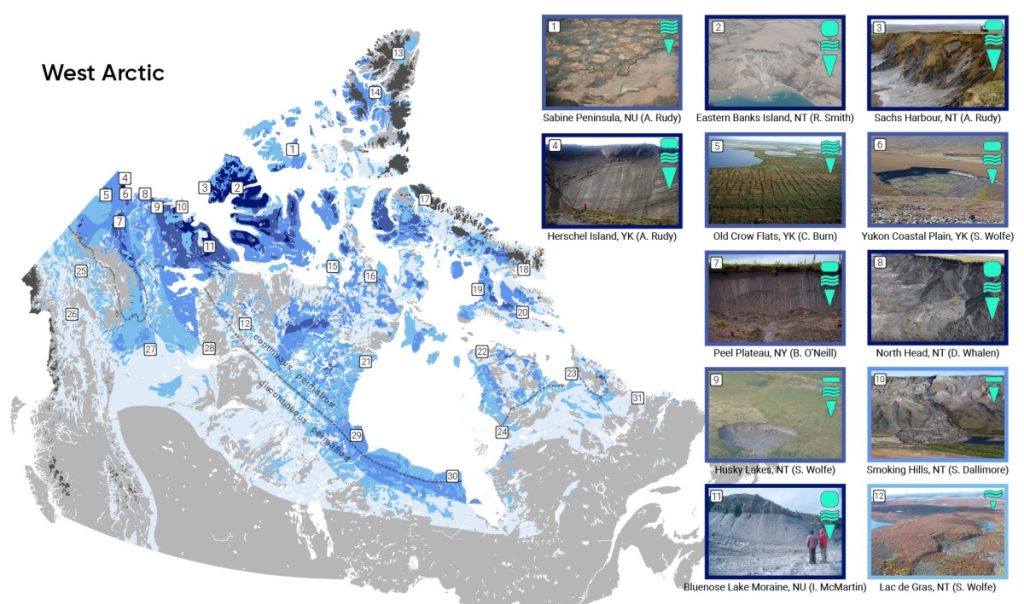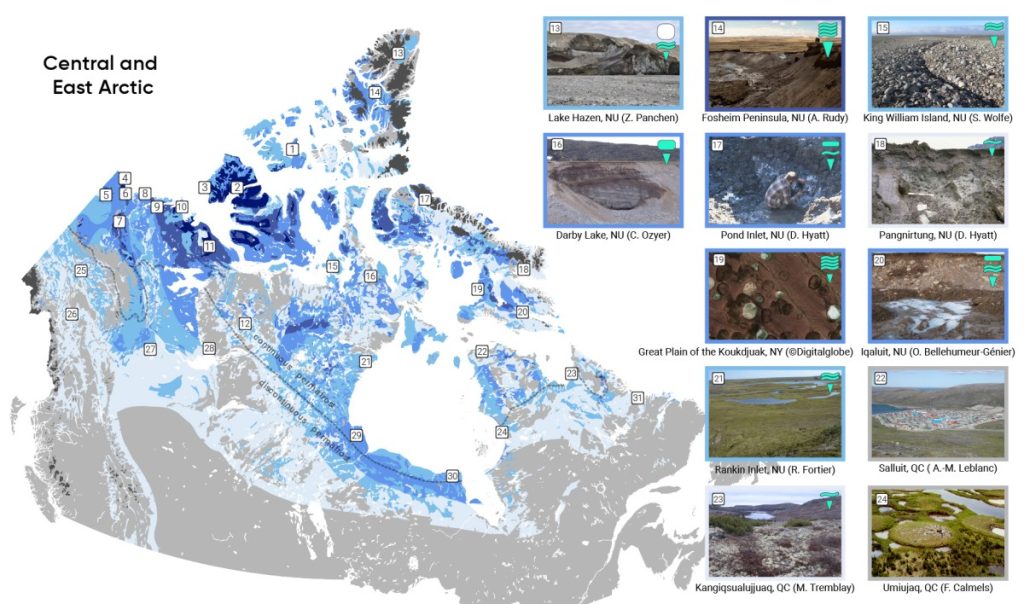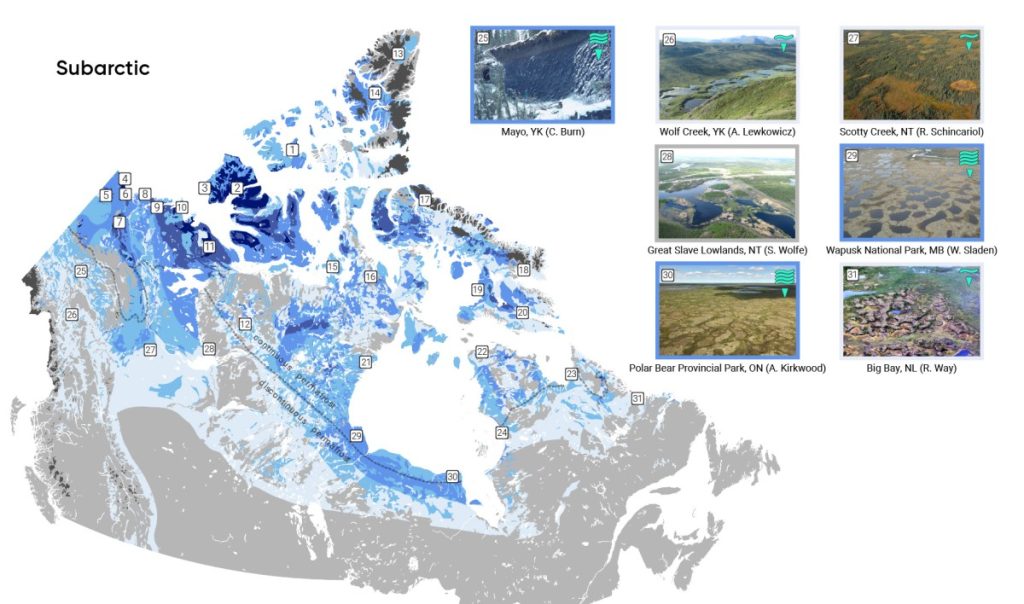Figure 6.3




Figure 6.3
This figure highlights the associations between modelled and observed ground ice abundance in the top five meters of permafrost in Northern Canada. It also includes photographs from 31 sites across Canada’s permafrost regions, illustrating the range of permafrost landscapes and thermokarst—topographic depressions created as a result of thawing ground ice—terrains associated with different ground ice types and abundance. The different ground ice types referred to in the figure include: segregated (i.e., relatively thin and discrete ice lenses or layers that form due to annual downward migration of water), relict (i.e., larger bodies or layers of ice preserved in permafrost by persistent cold-climate conditions) and wedge (i.e., ice that develops when low winter temperatures cause the ground to contract under stress and crack) (e.g., segregated, relict and wedge ice) and abundance.
Source
Adapted from Wolfe et al., 2021.